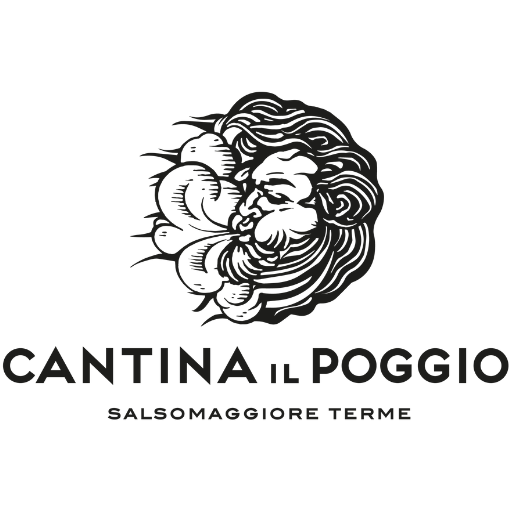Sapidity in wine
What makes a wine sapid ?
Can a wine with a salty taste actually be described as salty?
Sapidity in wine
The question of sapidity in wine has always been much discussed, however, it has not yet been possible to solve all the doubts about it.
Let’s start from a simple premise: every taste influences the intensity with which other tastes are perceived. Sapidity in wine, as in foods, increases our perception of sweetness, reducing the perception of acid.
Let’s think of a beautiful grilled fiorentina, covered with wonderful salt flakes and a drizzle of olive oil, as good as the one we produce in the estate at Cantina il Poggio.
The perception of acidity in wine decreases or increases the perception of sweet roundness.
(As it’s written in the notes we took during the Wine Club’s classes, the course of approach to the wine world that we hold here in the Winery)
Otium, the perfect pairing for a fiorentina, plays with this contrasts: fresh acidity of this full-bodied wine plays with the meat’s sapidity, creating a soft but cleaning sensation.
Tannins, fats, acidity and sapidity.
An explosion of flavours and an invitation to take onother bite. An another sip. And so on.

Sapidity in wine: what’s the cause?
The sensation of sapidity found in many wines comes from their content in dissolved mineral substances: the wine does not contain salt understood as sodium chloride. The different mineral substances that it contains, determine the sensation of salinity, which is much more appreciable in the absence of tannins that would overwhelm it, that is in white wines. With the term “sapid” we refer to a wine that presents an appreciable and pleasing sensation of minerality, due to its content in particularly significant saline substances, that is usually accompanied by an acidity such as to impart a pleasant sensation of gustatory freshness.
One of the most famous “salt” regions is the Rías Baixas of northwestern Spain, where some vineyards are within walking distance from the sea water. Here the vines come into contact with wind and rain extremely rich in mineral salts, which will affect the soil. The roots, absorbing the nourishment from the soil, will be enriched by these giving what we define as the “sapidity in wine”.
We also think of the wines of Etna, Irpinia and Campi Flegrei, to stay in our beautiful country.
Sense of taste
Obviously the sense of taste is the first one to which we think about talking about wine, as it is a product that we ingest. Thanks to the sense of taste we can perceive 5 sensations such as bitter, sour, sweet, salty and finally umami. The latter, mainly used in dishes of Eastern origin, gives the food a savory aftertaste similar to the star nut or soy sauce (or very aged Parmigiano Reggiano).
The identification of the various tastes is based on the stimuli sent to the brain by the receptors present in our language, it is never trivial to identify the prevailing taste.
Going back to the gustatory perceptions and to the tests done in the Winery during the Wine Club: we have the confirmation that the salinity in contact with the wine will not only make it salty, but will make us perceive it as sweeter and less acid than it is.
Of course, if the flavor is given by the wine itself, I will have to go and play with acidic foods: if we think of Sicilian whites, it is very easy to find some curious matching.
Are we in the Sicilian area? Do we feel like summer? Pasta with sardines, all those fresh first courses with the so-called “muddica”, where there is never a shortage of anchovies and a lemon peel.

Let’s leave the borders to arrive here in Parma, of course, city of culinary creativity: acidity is sought with the use of herbs, characteristic of all the Apennines where there was an abundance of cheesemakers as in the plain and the production of cow’s milk was much lower.
Answer n.1:
Erbazzone ! Or “torta d’erbi”, as they call in in the Appennini.
https://www.cucchiaio.it/ricetta/ricetta-erbazzone/
Answer n.2:
Eel, traditional and typical Christmas dish
https://www.cucchiaio.it/ricetta/ricetta-capitone-natale/
Sapidity in wine: perception
Generally speaking, a person perceives salt in concentration of about 0.5 grams per liter. In a wine, on average, there are 1.5 / 3 grams per liter of mineral salts of potassium, magnesium and calcium. They are the salts that give the flavor to the wine: that pleasant sensation that pushes us to get closer to the glass to drink another sip (well no, it is not always the fault of thirst).
Tasters usually use four blocks to “catalogue” the flavor of a wine:
-Non perceivable, lacking sapidity. Negative evaluation for wines that come from low quality grapes or that went through invasis processes
– Little sapid, slightly savory saline sensation just perceivable index of wines with very high acidity or few extractive substances
-Sapid, with a notable sapidity. Typical in good structured wines with a good alcohol quantity
-Very sapid, excessive sapidity, sometimes given by arid or brackish soil. Unpleasant sensation.

Conclusions
Try!
And if it is also true that here in the winery we do not have savory wines, we try very carefully to put ourselves in the game and confront ourselves with the most beautiful Italian realities in the world.
For all the advice, of course, we wait for you in the winery for a tasting.
Reservations on https://cantinailpoggio.it/en/cantina-il-poggio-english/
Comments ( 35 )
-
Gregoryopids
https://european-sailing.com/yacht-charter-ibiza
-
avenue17
You have hit the mark. In it something is and it is good idea. I support you.
-
novopet
I am sorry, that I can help nothing. I hope, you will be helped here by others.
-
continent telecom
What phrase... super, magnificent idea
-
virtual numbers
Many thanks for the help in this question. I did not know it.
-
european sailing
In my opinion you are mistaken. Let's discuss it.
-
virtual local numbers
Trifles!
-
JesseMup
https://virtual-local-numbers.com/countries/7-canada.html
-
avenue17
Between us speaking, you should to try look in google.com
-
Stevencline
https://pubhtml5.com/homepage/vnjlb/
-
Harrymip
Полностью стильные новинки подиума. Абсолютно все новости мировых подуимов. Модные дома, лейблы, haute couture. Интересное место для модных хайпбистов. https://femalemoda.ru/
-
Harrymip
Абсолютно свежие новинки мировых подиумов. Исчерпывающие эвенты самых влиятельных подуимов. Модные дома, лейблы, высокая мода. Новое место для стильныех людей. https://femalemoda.ru/
-
PeterSes
Точно актуальные новинки мира fashion. Абсолютно все новости всемирных подуимов. Модные дома, лейблы, haute couture. Свежее место для модных хайпбистов. https://breakmoda.ru/
-
JeffreyUnext
Style, luxury, hedonism Perfect style application for hypebeasts and cute people. Industry news, events. Best collections, collaborations, limited editions. https://dubai.luxepodium.com/
-
PodiumHM
Избранные актуальные события мира часов - новые коллекции именитых часовых домов. Точно все коллекции часов от дешевых до очень люксовых. https://podium24.ru/
-
TimothyAlisk
Очень актуальные новинки моды. Все новости всемирных подуимов. Модные дома, бренды, haute couture. Лучшее место для стильныех людей. https://furluxury.ru/
-
Herman
I doo not even know how I ended up here, but I thought this post was good. I ddo not know who yyou are but certainly you're going to a famous blogger if yyou aren't already ;) Cheers! My homepage; Lolita
-
neurontnE
I needs to spend some time learning more or understanding more.
-
Louiselozy
Несомненно стильные новости подиума. Все эвенты мировых подуимов. Модные дома, лейблы, высокая мода. Новое место для трендовых хайпбистов. https://balenciager.ru/
-
Jerrydorse
Абсолютно трендовые новости моды. Актуальные эвенты мировых подуимов. Модные дома, торговые марки, высокая мода. Свежее место для стильныех хайпбистов. https://luxe-moda.ru/
-
Donalddib
Абсолютно стильные события мира fashion. Актуальные мероприятия лучших подуимов. Модные дома, торговые марки, haute couture. Самое приятное место для стильныех людей. https://fashion5.ru/
-
ZofiaPox
Полностью важные новинки мира fashion. Абсолютно все мероприятия известнейших подуимов. Модные дома, бренды, гедонизм. Самое приятное место для модных людей. https://stylecross.ru/
-
ZofiaPox
Полностью свежие новости мировых подиумов. Все мероприятия всемирных подуимов. Модные дома, торговые марки, высокая мода. Свежее место для стильныех хайпбистов. https://whitesneaker.ru/
-
DarrellRor
Самые свежие новинки модного мира. Важные мероприятия самых влиятельных подуимов. Модные дома, торговые марки, гедонизм. Приятное место для трендовых людей. https://rfsneakers.ru
-
Orvillegably
Наиболее свежие новости подиума. Важные события всемирных подуимов. Модные дома, бренды, гедонизм. Самое приятное место для модных людей. https://modavmode.ru
-
Richardzinia
Абсолютно стильные новинки моды. Важные мероприятия известнейших подуимов. Модные дома, бренды, высокая мода. Самое приятное место для модных людей. https://miramoda.ru
-
DavidCex
Точно актуальные новинки модного мира. Актуальные новости всемирных подуимов. Модные дома, бренды, haute couture. Приятное место для трендовых хайпбистов. https://urban-moda.ru/
-
Pabloglani
Точно свежие новинки моды. Исчерпывающие события мировых подуимов. Модные дома, бренды, высокая мода. Самое приятное место для трендовых людей. https://sofiamoda.ru
-
Williemoory
Абсолютно стильные новости индустрии. Актуальные мероприятия известнейших подуимов. Модные дома, бренды, высокая мода. Интересное место для модных людей. https://fashionsecret.ru
-
Danielcox
Абсолютно важные новости моды. Актуальные мероприятия всемирных подуимов. Модные дома, торговые марки, гедонизм. Новое место для модных людей. https://fashionablelook.ru
-
DebraMub
Очень важные события подиума. Актуальные новости известнейших подуимов. Модные дома, бренды, haute couture. Свежее место для трендовых хайпбистов. https://worldsfashion.ru/
-
ClydeAlopy
Несомненно свежие события подиума. Все эвенты всемирных подуимов. Модные дома, лейблы, высокая мода. Самое приятное место для трендовых людей. https://modavgorode.ru
-
JoannJar
Абсолютно свежие новости индустрии. Актуальные новости мировых подуимов. Модные дома, торговые марки, haute couture. Новое место для стильныех людей. https://myfashionacademy.ru/
-
Robertblife
Полностью актуальные новости индустрии. Исчерпывающие эвенты лучших подуимов. Модные дома, бренды, haute couture. Лучшее место для модных людей. https://metamoda.ru/moda/599-doja-cat-vyzvala-bezumie-v-tope-i-yubke-iz-pishchevoy-plenki-s-rezhisserom-vetements-guram-gvasalia/




JohnnyLig
https://continent-telecom.com